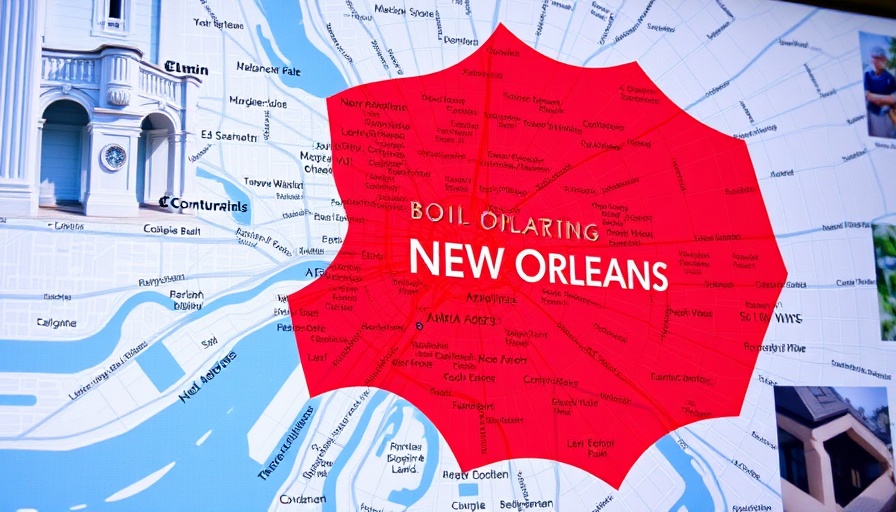
A Boil Water Advisory: Understanding Its Importance for Your Health
New Orleans is currently facing a boil water advisory affecting several areas of Uptown, specifically following a significant water main break on Upperline Street. The alert was necessitated by a drop in water pressure that could potentially compromise water safety, prompting the Sewerage and Water Board of New Orleans to encourage residents to boil water before consumption.
For individuals residing in Louisiana, particularly those 55 and older, it's vital to grasp the implications of this advisory. While the boil water advisory is a routine response to such incidents, it highlights the necessity of taking precautions to avoid potential health risks associated with contaminated water.
The Impact of a Water Main Break
A water main break can be disruptive, not only affecting daily activities but also posing health risks. When water pressure drops, it can allow contaminants to enter the water supply, making proper boiling before use essential. This advisory emphasizes the significance of maintaining water infrastructure and the challenges that aging systems pose in urban areas like New Orleans.
Historical Context: Water Issues in New Orleans
New Orleans is no stranger to water system challenges. The city, known for its unique geographic and environmental features, often grapples with infrastructure difficulties that have been longstanding. Over the years, there have been multiple advisories issued due to similar incidents, underscoring the need for continual investment in water systems to prevent these situations.
Community Response: What Residents Should Do
During a boil water advisory, residents are advised to boil all water used for drinking, cooking, and hygiene until they have confirmation that it is safe. For older adults, who may have specific health considerations, it is important to adhere to these guidelines strictly. Additionally, residents should consider storing boiled water in clean, sealed containers for easy access.
Importance of Communication During Emergencies
This recent incident highlights how important it is for local authorities to communicate effectively with residents. Such situations can create confusion, and clear messaging about safety precautions ensures that everyone is well-informed. Older residents may require additional outreach to fully understand the implications of a boil water advisory and what actions they should take.
Future Predictions: Infrastructure Upgrades
The recurring nature of boil water advisories may prompt city leaders to consider significant improvements to the water system. Community leaders and stakeholders are increasingly aware that investing in sustainable infrastructure can yield better water quality and reduce the frequency of such disruptive occurrences.
Next Steps: Stay Informed
Residents are encouraged to stay updated through official sources, including local news outlets and the Sewerage and Water Board's announcements. By being proactive and informed, you can ensure your safety and contribute to the community's health.
Conclusion: Take Action for Your Health
During times of uncertainty, such as a boil water advisory, it's essential to prioritize your health and well-being by following local guidelines. This situation serves as a timely reminder of the importance of safe drinking water. As the Sewerage and Water Board crews work diligently to repair the broken water main and restore normal services, your vigilance in adhering to boil water advisories can help keep you and your loved ones safe.
 Add Row
Add Row  Add
Add 



Write A Comment